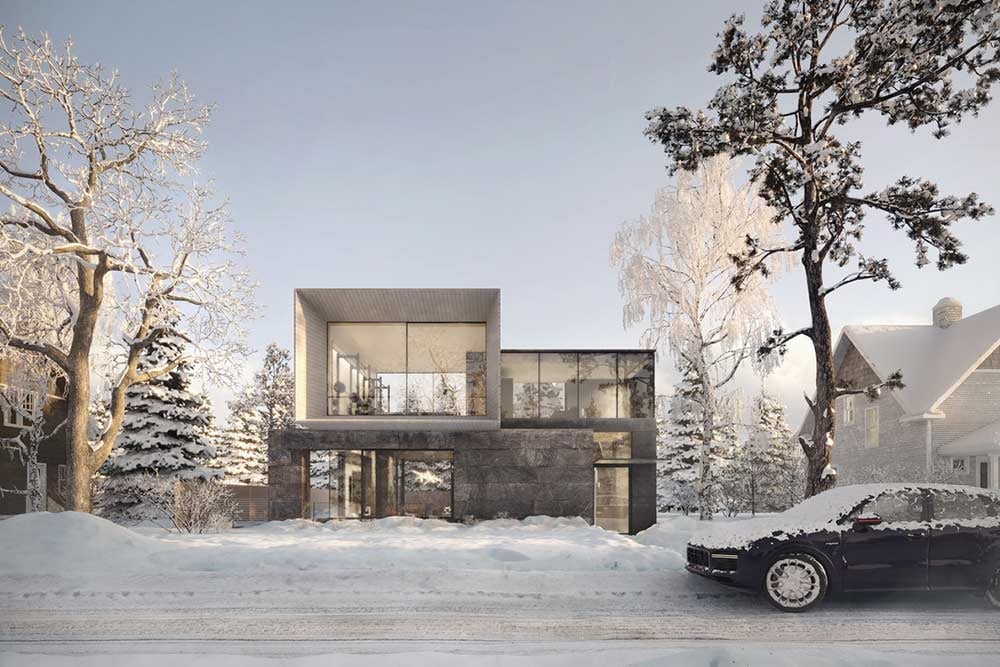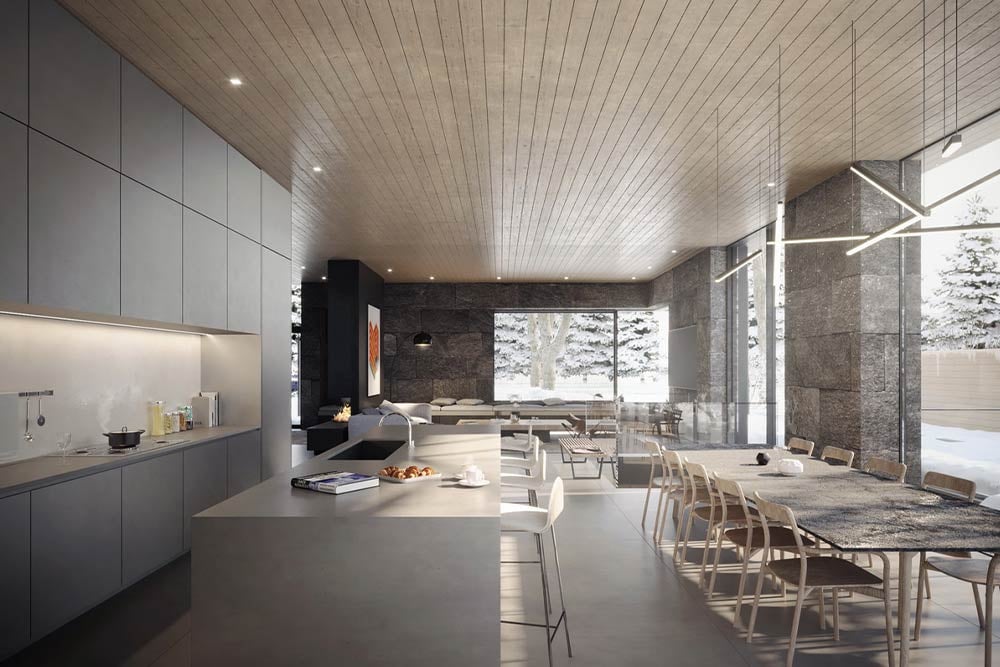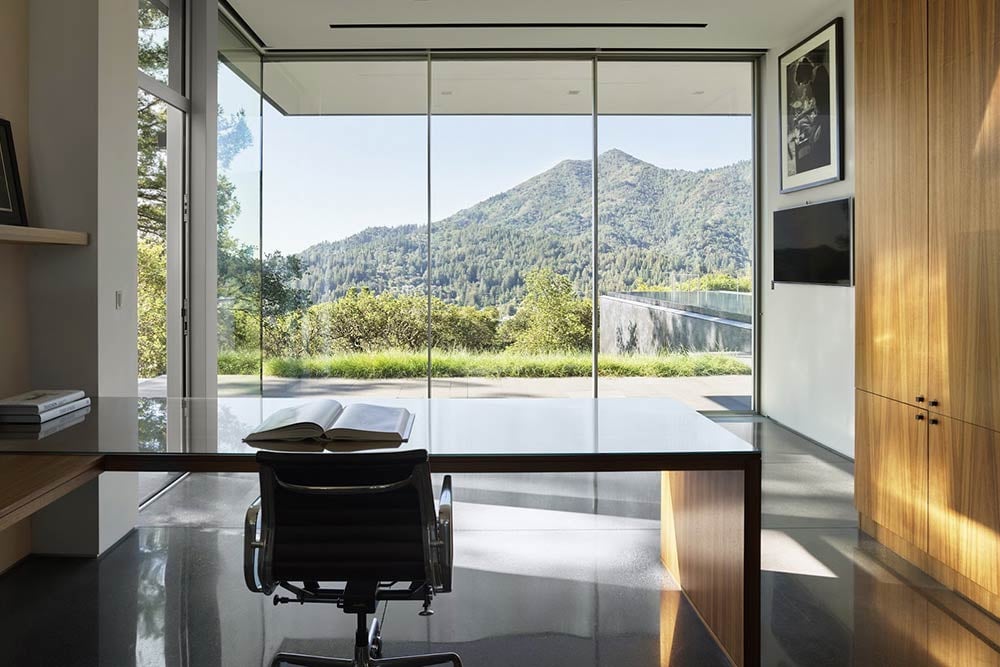
Modern architecture is guided by many different principles. One of the most important of these principles is ensuring that a home (or any other structure) is built with its location in mind.
There is a drive to not only ensure that a structure feels integrated in its environment, but also that it will be able to withstand the unique weather, climate, and other challenges that a particular location may present, which can differ substantially depending on whether the home is being built in the city, along the shore—or in this case a mountain environment.
One of the most critical considerations that will be influenced by the location of the home will be the material selection used to construct the exterior of the structure. Below, we explain why material choice is so important when you are building in the mountains, and also discuss specific materials you may want to consider leveraging.
Why does material selection matter?
In a mountain landscape, structures face unique challenges that they don’t face in other environments. These challenges limit the types of materials which may be suitable for building in the mountains, and include:
- Greater levels of snowfall in the winter. This makes choosing waterproof or corrosion-resistant materials important. Likewise, it makes it more important to choose materials which can stand up to the snow removal process (i.e., use of salts, shoveling, and plowing)
- More direct sunlight and UV radiation, particularly during the summer months. This is due to the higher elevation on the mountain. This can cause colors to fade, especially in paints and many woods.
- Repeated expansion and contraction due to changing temperature. This can occur year round, but is of particular concern during the winter months, when the temperature fluctuates between sub-freezing at night and much warmer during the day. This repeated contraction and expansion can lead to structural damage and weaken the material over time.
Exterior Materials Ideally Suited for Mountain Location
Due to the challenges discussed above, not all exterior materials will be well-suited to leverage in a mountain environment. Those that are prone to water damage, corrosion, fading, and those which readily expand in warmer temperatures while contracting in colder temperatures will perform particularly poorly in these locations.
Here are four types of materials that can work well in a mountain setting, as well as a discussion about how to choose the right materials.
1. Concrete and Masonry
Concrete and masonry often perform exceptionally well in a mountain setting for a few key reasons. First, the materials themselves are not particularly sensitive to temperature or moisture. This reduces not only the risk of water damage due to snow and sleet, but also reduces the risk of damage caused by repeated expansion and contraction of the materials.

Second, concrete or stone walls tend to be significant in size: They are often thicker than walls constructed out of other types of materials. This thickness, paired with the overall heft and density of the materials themselves, also allows the home to better absorb and retain heat from the sun during the cold winter months, which can help to reduce energy needs.
2. Woods

Certain species of woods, such as cedar, are naturally resistant to insect and water damage, making them ideal choices for these landscapes. Other species can be more prone to this damage, making them ill-suited for use in the mountains.
Then, of course, you will need to choose wood that has been properly treated to withstand the conditions. This can be achieved through chemical treatment as well as certain physical transformations. For example, charred wood known as shou sugi ban, can inhibit rot while aging beautifully over time.
If you are unsure what woods would work well in your location, your architect may want to consider the species of trees that grow in the area, as well as those which are traditionally used in the community that you will be building in. While not always the case, it is often discovered that these traditional local woods exhibit many of the characteristics that we look for. They can also often be sustainably sourced locally instead of needing to be transported from afar.
3. Metal
Metal is a popular exterior material to use in modern architecture, due to both its beauty and its readiness to transform into new and interesting shapes.

Unfortunately, many metals are heat sensitive, in that they will expand and contract to a high degree with changing temperature. Other metals are extremely susceptible to rust and corrosion. Both of these issues can lead to structural challenges, making it important to select the right types of metal for your project. Zinc is a good example of a metal which is beautiful, but which would contract too much to use in a mountain environment.
On the other hand, other metals such as aluminum, copper, and plate steel are more reliant against expansion and contraction, making them excellent choices. In the case of plate steel, it is important to choose panels or sheets that are thick enough to resist these fluctuations.
Likewise, certain metals will corrode, but will do so beautifully. Copper will, for example, over time develop a unique patina that is beautiful while at the same time protecting the inner layers of metal from further corrosion.
4. Glass
When many people decide to build in the mountains, it is at least in part because they would like to enjoy the beauty of their surroundings from inside the home.
With this in mind, many modern mountain homes take great pains to build a visual connection to the environment by leveraging large, strategically placed windows as well as floor-to-ceiling expanses of glass.

But when using glass, it’s critical to use high-performing glass that is designed to retain heat while reducing glare. Triple-paned glass is often an excellent choice which will retain heat and ensure that the building’s envelope is tight so that there is minimal heat loss.
Choosing the Right Materials
As you can see, there are many different factors to consider when selecting the materials that you will use to build your modern mountain home. When choosing an architect to work with for your project, it’s important to ensure that they have experience designing homes for these environments. A skilled custom residential architect can help guide these decisions and shed light on the appropriate considerations, to bring your vision to life.

Written by Bryn Garrett
Since joining Ehrlich Yanai Rhee Chaney Architects in 2012, Bryn Garrett has been involved with a broad range of the firm’s portfolio, from custom residential and hospitality, to commercial, institutional and creative office. Having equal experience in many aspects of the practice gives him a unique perspective on a project’s context, materiality and environmental impact. Bryn is heading EYRC’s San Francisco studio, which opened in 2017.
